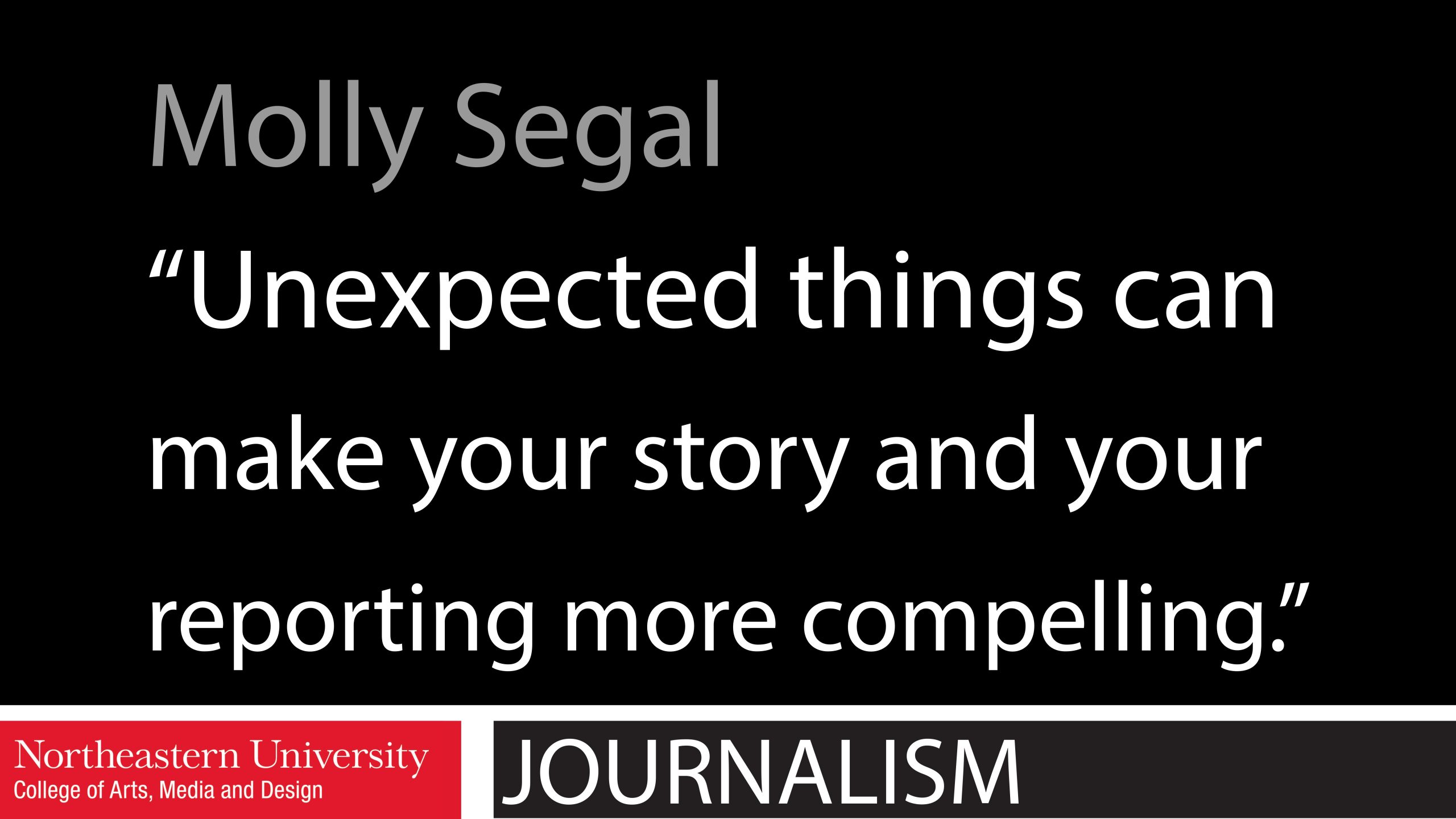Audio storyteller Molly Segal on reporting in the wild
Molly Segal strolled into the classroom wearing a black turtleneck, baggy green pants, and fashionable brown boots. The classroom and her clothes were far different than her everyday work and clothing. Segal, an audio journalist, lives near Banff National Park, within Canada’s famous Rocky Mountains, and is often clad in sporty gear that prepares her for all kinds of weather.
Segal, who has produced podcasts for NPR and other platforms, spoke at “Pizza, Press & Politics,” a speaker series sponsored by the Northeastern University School of Journalism. She shared with students her insights on audio journalism, podcasting, and creative sound design.
“Unexpected things can make your story and your reporting more compelling,” Segal said, reflecting on the unpredictability of working outdoors.
Segal has spent the last few years reporting from Banff, the oldest national park in Canada, writing about different animals, such as wolves and bears, and environmental issues.
Although she has no educational background in science, Segal became interested in audio-based environmental storytelling. When she first moved to Banff, she started noticing things that to her, as an outsider, seemed odd.
“It’s really weird that bears make the front page of a newspaper here … as if they are characters or celebrities,” Segal said.
Segal felt that the science-related topics she wanted to cover might not appeal to a wide audience. She wanted to expand that audience by coming up with creative ways to engage listeners in her stories. She pointed out that most of her content revolved around the environment – which she cannot interview.
Segal gave five tips to “make your story come to life when your subject can’t speak for itself.”
The tips were “go where the action is, talk to people who care, include different perspectives, tell a story, and use creative sound design.” She emphasized it was more important to interview scientists in the field, rather than at their desks.
Segal usually collects her own sound effects for stories, taking advantage of the nature around her. However, “sometimes things have happened in the past and you want to bring it to life through creative sound,” Segal said.
For instance, Segal borrowed a friend’s dog to emulate wolf sounds for a story on a wolf pack.
“I couldn’t record a wolf in the wild, for ethical and safety reasons… but I wanted to create a sense that we were in the wolf pack,” she said. She attached a microphone to her friend’s dog and recorded its breathing and movements as it played with a stick.
Segal also talked to biologists to make sure the “wolf sounds” were accurately recreated. The result was an audio documentary for CBC Radio One’s The Doc Project.
Outside of her work for CBC Radio, Segal has produced stories for NPR and The Narwhal. She is currently in Cambridge as a Knight Science Journalism Fellow at MIT. After her work in Cambridge, Segal is set to return to Banff National Park and continue her work there.





